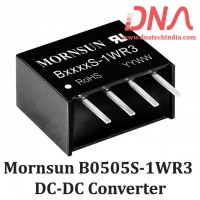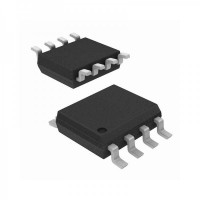The PN junction |
|
In the previous tutorial we saw how to make an N-type semiconductor material by doping it with Antimony and also how to make a P-type semiconductor material by doping that with Boron. This is all well and good, but these semiconductor N and P-type materials do very little on their own as they are electrically neutral, but when we join (or fuse) them together these two materials behave in a very different way producing what is generally known as a PN Junction. |
|
When the N and P-type semiconductor materials are first joined together a very large density gradient exists between both sides of the junction so some of the free electrons from the donor impurity atoms begin to migrate across this newly formed junction to fill up the holes in the P-type material producing negative ions. However, because the electrons have moved across the junction from the N-type silicon to the P-type silicon, they leave behind positively charged donor ions (ND) on the negative side and now the holes from the acceptor impurity migrate across the junction in the opposite direction into the region were there are large numbers of free electrons. As a result, the charge density of the P-type along the junction is filled with negatively charged acceptor ions (NA), and the charge density of the N-type along the junction becomes positive. This charge transfer of electrons and holes across the junction is known as diffusion. |
|
This process continues back and forth until the number of electrons which have crossed the junction have a large enough electrical charge to repel or prevent any more carriers from crossing the junction. The regions on both sides of the junction become depleted of any free carriers in comparison to the N and P type materials away from the junction. Eventually a state of equilibrium (electrically neutral situation) will occur producing a "potential barrier" zone around the area of the junction as the donor atoms repel the holes and the acceptor atoms repel the electrons. Since no free charge carriers can rest in a position where there is a potential barrier the regions on both sides of the junction become depleted of any more free carriers in comparison to the N and P type materials away from the junction. This area around the junction is now called the Depletion Layer. |
|
|
The PN junction |
|
|
| The total charge on each side of the junction must be equal and opposite to maintain a neutral charge condition around the junction. If the depletion layer region has a distance D, it therefore must therefore penetrate into the silicon by a distance of Dp for the positive side, and a distance of Dn for the negative side giving a relationship between the two of Dp.NA = Dn.ND in order to maintain charge neutrality also called equilibrium. |
|
|
PN junction Distance |
|
|
|
As the N-type material has lost electrons and the P-type has lost holes, the N-type material has become positive with respect to the P-type. Then the presence of impurity ions on both sides of the junction cause an electric field to be established across this region with the N-side at a positive voltage relative to the P-side. The problem now is that a free charge requires some extra energy to overcome the barrier that now exists for it to be able to cross the depletion region junction. |
|
This electric field created by the diffusion process has created a "built-in potential difference" across the junction with an open-circuit (zero bias) potential of: |
|
|
|
Where: Eo is the zero bias junction voltage, VT the thermal voltage of 26mV at room temperature, ND and NA are the impurity concentrations and ni is the intrinsic concentration. |
|
A suitable positive voltage (forward bias) applied between the two ends of the PN junction can supply the free electrons and holes with the extra energy. The external voltage required to overcome this potential barrier that now exists is very much dependent upon the type of semiconductor material used and its actual temperature. Typically at room temperature the voltage across the depletion layer for silicon is about 0.6 - 0.7 volts and for germanium is about 0.3 - 0.35 volts. This potential barrier will always exist even if the device is not connected to any external power source. |
|
The significance of this built-in potential across the junction, is that it opposes both the flow of holes and electrons across the junction and is why it is called the potential barrier. In practice, a PN junction is formed within a single crystal of material rather than just simply joining or fusing together two separate pieces. Electrical contacts are also fused onto either side of the crystal to enable an electrical connection to be made to an external circuit. Then the resulting device that has been made is called a PN junction Diode or Signal Diode. |
|
In the next tutorial about the PN junction, we will look at one of the most interesting aspects of the PN junction is its use in circuits as a diode. By adding connections to each end of the P-type and the N-type materials we can produce a two terminal device called a PN Junction Diode which can be biased by an external voltage to either block or allow the flow of current through it. |
|
|
|
|
|
Reproduced with permission from Wayne Storr |
| http://www.electronics-tutorials.ws/diode/diode_2.html |






